 by our College Data Analytics Team
by our College Data Analytics TeamThe total graduate student population at Five Branches U is made up of 79.7% women and 20.3% men. Note that these percentages may differ for certain degree programs.
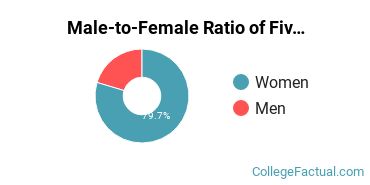
Racial-ethnic minorities* make up 52.7% of the graduate student population at Five Branches U. The school attracts students from outside the U.S., too. Around 16.9% of graduate students hail from another country. For more details on graduate school diversity at the school, check out the chart below. If you click on it, you'll be taken to a page with more details.
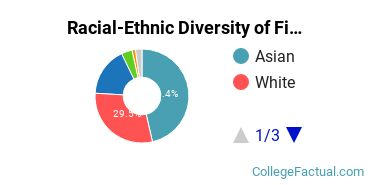
The average graduate full-time tuition and fees is shown in the table below.
| In-State | Out-of-State | |
|---|---|---|
| Tuition | $19,048 | $19,048 |
| Fees | $315 | $315 |
The average starting salary for graduate students who earn their master's degree at Five Branches U is $16,011. When comparing to other master's degree holders, that's on the low side. It's about 73% lower than the national average of $58,425.
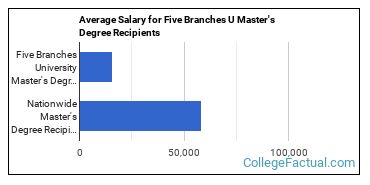
The average starting salary for graduate students who earn their doctorate degree at Five Branches U is $48,901. When comparing to other doctorate degree holders, that's on the low side. It's about 35% lower than the national average of $75,260.
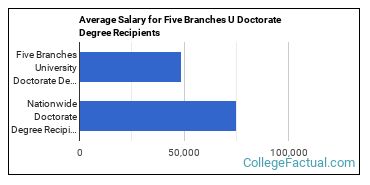
Get more details about the location of Five Branches University.

Contact details for Five Branches U are given below.
| Contact Details | |
|---|---|
| Address: | 200 7Th Avenue, Santa Cruz, CA 95062 |
| Phone: | 831-476-9424 |
| Website: | www.fivebranches.edu/ |
Around 100.0% of Five Branches U graduate students took at least one course online during the 2020-2021 academic year. Approximately 21.9% of grad students took all their classes online during that same time period.
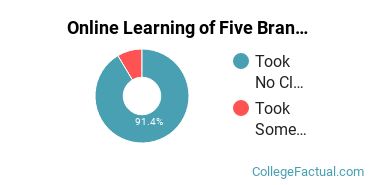
The only degree programs listed here are those in which master’s degrees were awarded in 2020-2021.
| Master’s Degree Program | Annual Graduates |
|---|---|
| Alternative Medicine & Systems | 42 |
Just like the master’s degree programs, only programs that had doctorate degrees awarded in 2020-2021 are shown here.
| Doctorate Degree Program | Annual Graduates |
|---|---|
| Alternative Medicine & Systems | 113 |
Footnotes
*The racial-ethnic minorities count is calculated by taking the total number of students and subtracting white students, international students, and students whose race/ethnicity was unknown. This number is then divided by the total number of students at the school to obtain the racial-ethnic minorities percentage.
References
More about our data sources and methodologies.